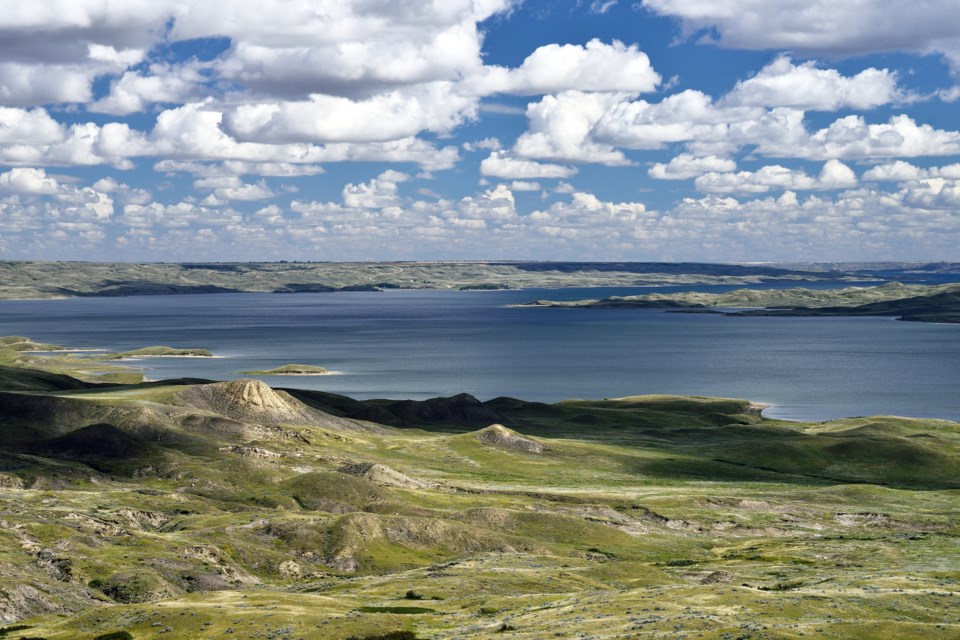Lake Diefenbaker is one of the largest sources of untapped water in Canada and could support expanding three irrigation projects in Saskatchewan that cover a half-million acres of land.
That’s the belief behind a “transformational” $4-billion irrigation expansion project involving this body of water. This project would include rehabilitating the West Side pumping plant, expanding the West Side canal, and upgrading the Qu’Appelle South Water Conveyance system.
If this project proceeds, it would be the largest infrastructure project in the province’s history and reinforce the idea that Saskatchewan is a global leader in food security and water security for industrial uses.
The provincial government announced this initiative in July 2020.
To celebrate the recent Mining Week in Saskatchewan, the Saskatchewan Mining Association hosted an online forum about the proposed irrigation projects, where representatives from the Water Security Agency — which manages the lake — and Clifton Associates — the project contractor — discussed the initiative.
The provincial government constructed Lake Diefenbaker in 1967 after the need for a water source became apparent during the Dirty Thirties, explained Mortlach-born Clinton Molde, executive director of the Water Security Agency (WSA). The lake provides water to 60 per cent of Saskatchewan, while it also supports industry, recreation, irrigation, hydropower and flood control.
The vision was that the lake would support 200,000 hectares (500,000 acres) of land in Saskatchewan, but it currently supports only 20 per cent of that.
“The lake is one of the largest and untapped sources of water in our country. When you look at the many analyses and studies done over the years, there would be more than enough to supply these three irrigation projects,” Molde said. “When we look at the past flow data over the past 88 years … nearly 900,000 acre-feet per year of water could be made available for irrigation.”
An acre-foot of water is one foot (30 centimetres) of water on an acre of land. Lake Diefenbaker — 225 kilometres long with a surface area of 110,000 acres — stores 7.6 million acre-feet of water.
Five to seven feet of water on top of the reservoir would support 500,000 acres of land. The depth at Gardiner Dam is 185 feet deep, whereas the Riverhurst fairy crossing is 200 feet deep.
Several parts to Lake Diefenbaker direct water throughout the area, such as the East Side pumping station, the Coteau Creek hydro plant, and Gardiner Dam, Molde said. The existing infrastructure currently irrigates about 60,000 acres and provides water to reservoirs, four potash mines, and area municipalities.
Infrastructure is already in place to support the West Side rehabilitation project. Parts of it were constructed in the late 1960s and abandoned in 1973 after 95 per cent of the canal was completed, he continued.
This 19-kilometre-long canal — which has never been used — starts near the dam, runs to the Village of Conquest, and could irrigate 80,000 acres. The canal could be extended to Asquith and Rosetown and irrigate another 260,000 acres, while a new pump station could support up to 340,000 acres.
Meanwhile, the Qu’Appelle South Water Conveyance system project would see a canal built that is 100 kilometres long. It would run adjacent to Highway 42 and connect at Buffalo Pound while supporting 120,000 acres.
The WSA hired Clifton Associates to complete the engineering pre-design of the West Side expansion project, said Molde. The firm will lead the environmental review and public engagement process while collecting data and performing tests.
These rehabilitation projects will provide a financial stimulus in the province, he continued. Area communities will benefit, local construction companies will be rewarded, Saskatchewan workers will be needed to operate and maintain the equipment, and the food-processing industry could grow more if extra land is irrigated.
This initiative would also help the province diversify the crops it grows, enhance food security, support the livestock industry, and support global warming adaptation and resiliency.
“The Lake Diefenbaker irrigation expansion project,” added Molde, “will be transformational.”




